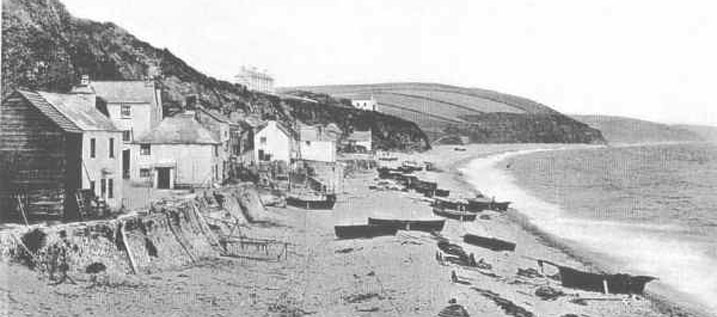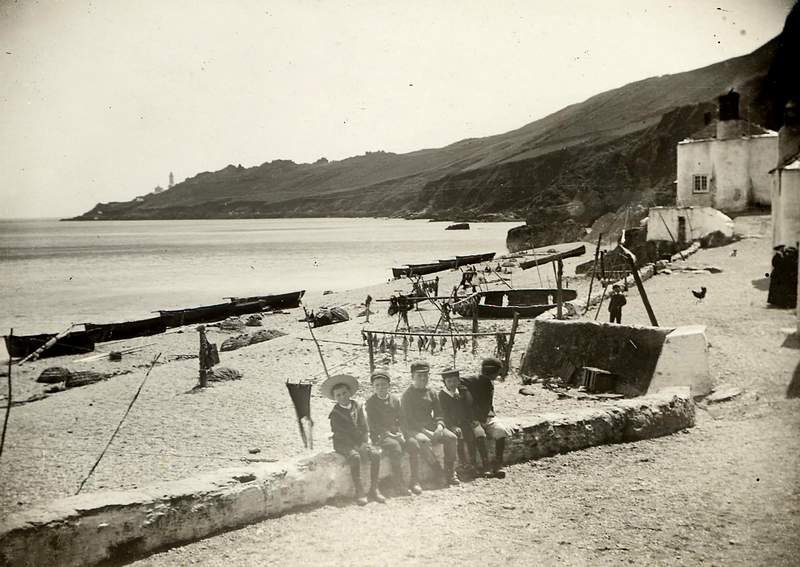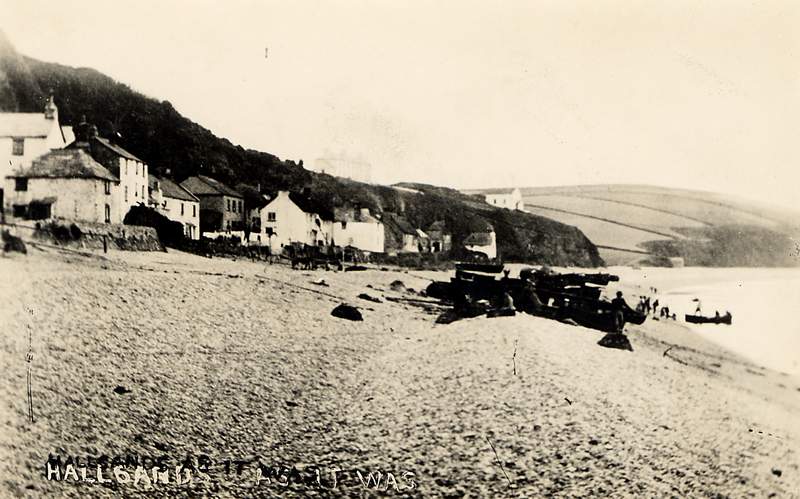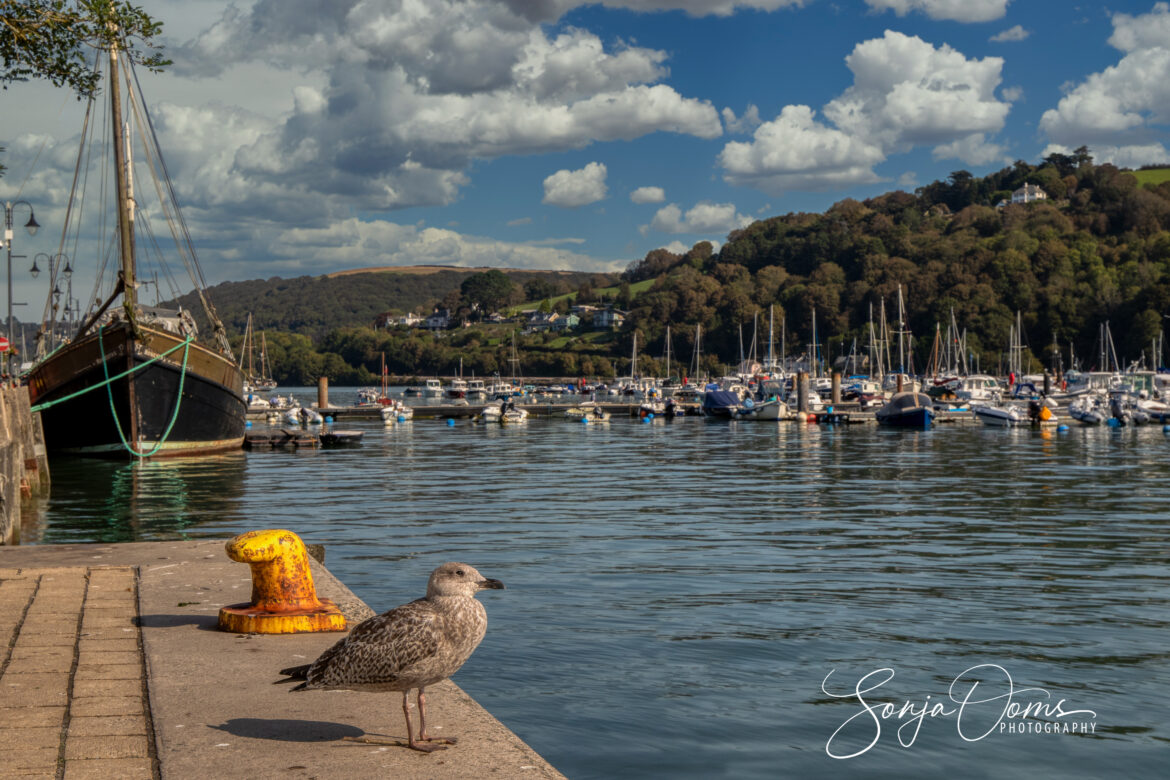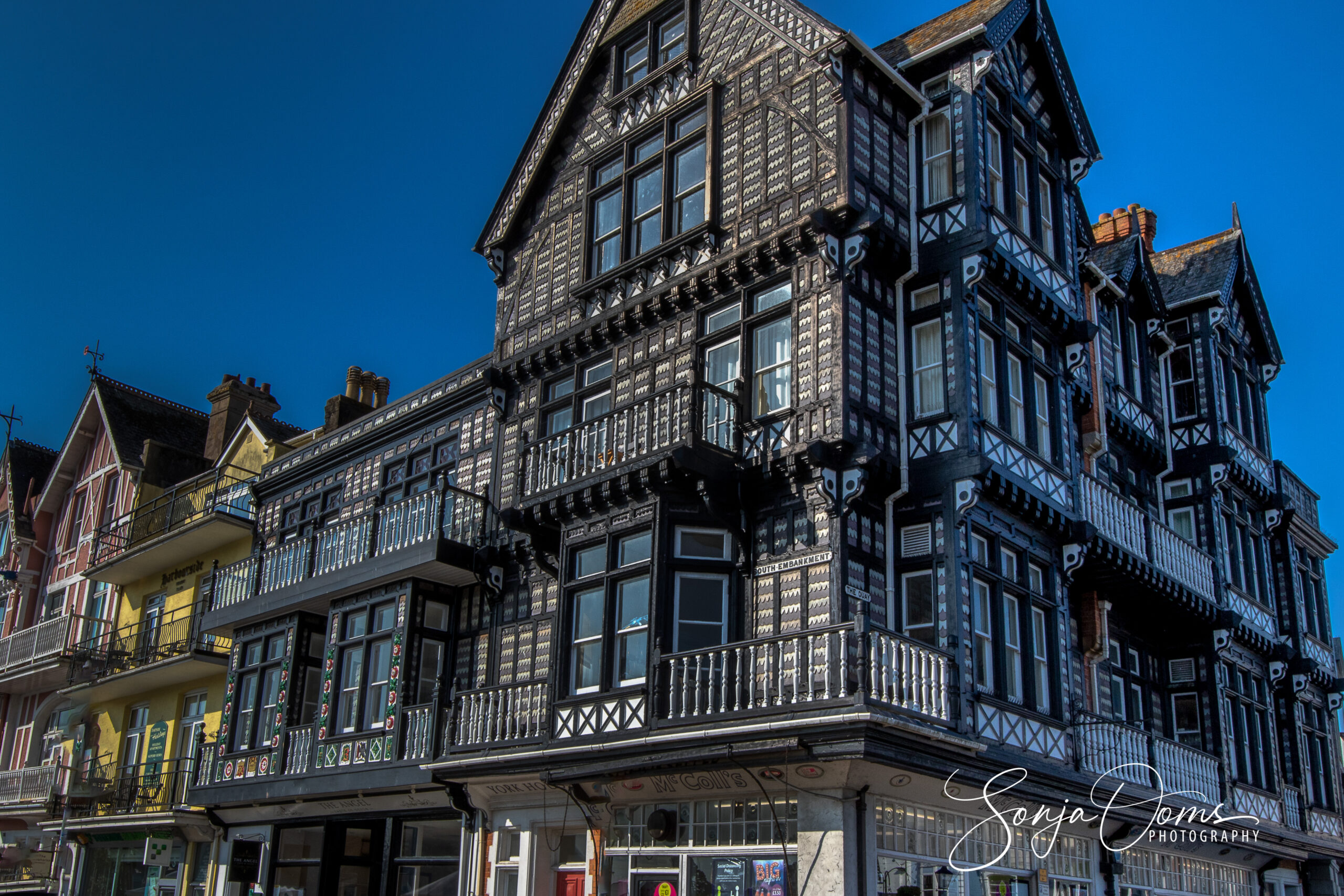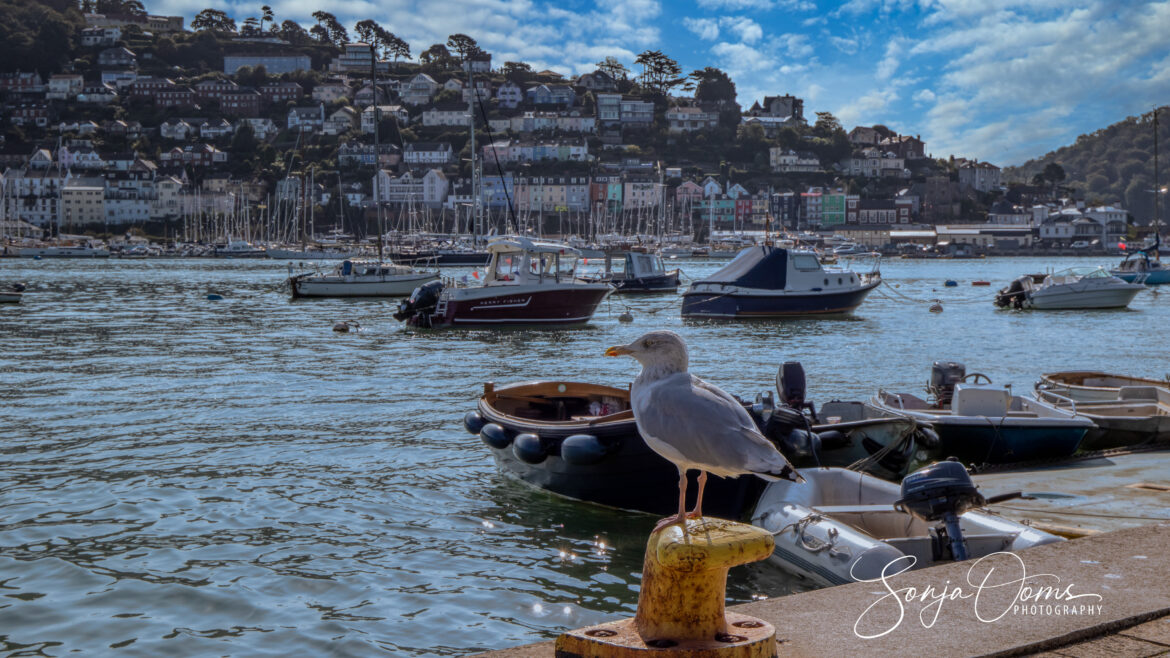Scenes and stories of shipwrecks, the charm of Devon lanes winding between abundant hedge-banks and the stunning views of the seemingly endless and dramatic coast, that’s what we found in South Devon.
On this trip we stayed in a nice, cozy, self-catered cottage with our dear friends from Suffolk Alex & Derek, the same ones who pleaded guilty for introducing us to the Yorkshire Dales also. Just yanking your chain Alex: we’re forever grateful for all the beautiful places in the UK you’ve shown us already and will still show us. The cottage they picked was just next to the stunning coastline of the National Trust property of Bolberry Down and came with unbelievably nice weather ! What more can a pair of Belgians cruising around the UK want ?

View from Bolberry Down towards Hope Cove.
South Devon was designated Area of Outstanding Natural Beauty by the UK government in 1960. It covers 60 absolutely glorious miles of coastline, estuaries and countryside between Plymouth and Torbay. Perhaps a little explanation for the non-British about the “Areas of Outstanding Natural Beauty” (AONB on Google Maps) They are Britain’s best landscapes. There are now 46 of them, all designated by government and protected by law. Each one has its own special character.
The area where we stayed, around Salcombe, is dotted with picturesque villages reached by extremely narrow, winding lanes. Which makes driving in this area an experience in itself. Roads amount to not much more than narrow, winding back-country lanes, sandwiched between thick, high hedgerows and with a distinct absence of anything resembling road markings. Imagine that hartstopping moment when you suddenly come face to face with a giant tractor on a road barely wide enough for a Mini Cooper!
Bolberry Down has a network of paths running along high cliff tops with stunning views, providing a choice of walks of varying lengths. Try the walk along the coastal path to Hope Cove, a popular unspoiled village with excellent sandy beaches and a very nice small restaurant The Cove Devon. A relaxed little pub which has really good, unpretentious pub food and friendly service.
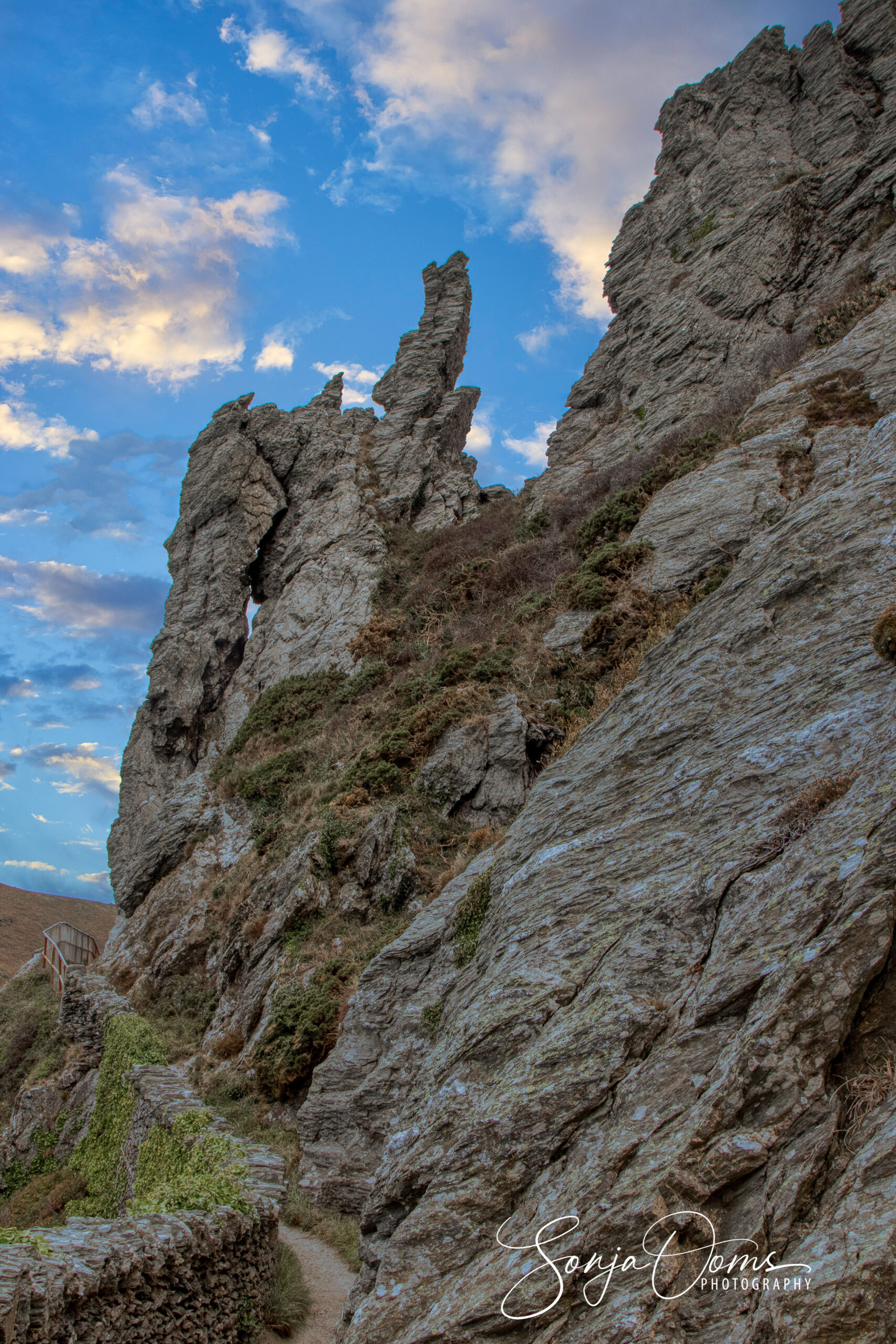

Sharp Tor on the South West Coast Path (top picture)
Salcombe Harbour (and Kingsbridge Estuary)
Or why not have a look at Ayrmer Cove or more to the East the lighthouse of Start Point? The village of Salcombe itself and the National Trust gardens of Overbecks. Or walk down to the ruined fishing village of Hallsands.

Start Point Lighthouse (1836)
The remaining ruins of the village are a bit underwhelming but stand as testament to the power of the sea and the danger of over-exploiting natural resources. You used to be able to walk among the ruins, but it has become more dangerous over time, and the path to access Hallsands has itself been washed away now. A viewing platform has been built with information panels telling the story of how Hallsands was destroyed. From the platform you can see the last remaining house in the village, now boarded up and deserted, and in the distance, the ruined cottages.
Hallsands village – how it was
In the 1890s, the British Admiralty decided that the naval dockyard at Devonport should be expanded. The scale of the undertaking was vast and required hundreds of thousands of tons of concrete. In January 1896 the construction contract was awarded to Sir John Jackson Ltd, who was also granted permission to dredge shingle from the coast between Hallsands and neighbouring Beesands.
An inquiry was established in response to protests from villagers, who feared that the dredging might threaten their beach and village. The inquiry found that the activity was not likely to pose a significant threat, so dredging continued.
However by 1900 the level of the beach had started to fall. In the autumn storms that year, part of the sea wall was washed away. In November 1900, villagers petitioned their Member of Parliament complaining of damage to their houses, and in March 1901 Kingsbridge Council wrote to the Board of Trade complaining of damage to the road. In September 1901 a new Board of Trade inspector concluded that further severe storms could cause serious damage and recommended that dredging be stopped. On the 8th January 1902 the dredging licence was revoked. But it was too little too late: the damage was irreversible. During the night of the 26th January 1917, a combination of easterly gales and exceptionally high tides breached Hallsands’ defences and the whole village (except for one house) fell into the sea! Miraculously no one was hurt.
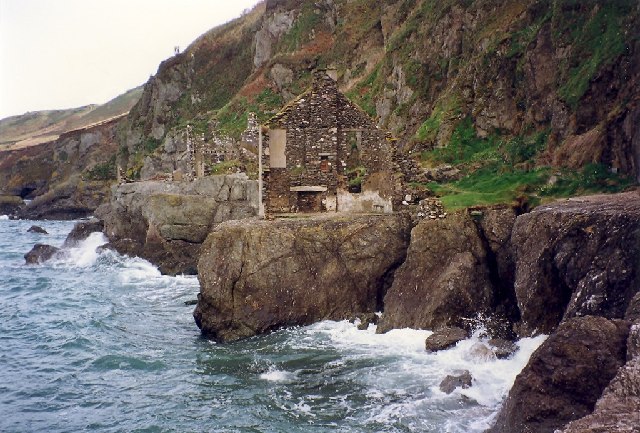
Hallsands Village now.
On the way back to Wimbledon we also had some time to spare and made a short stop in Dartmouth, scenic natural harbour at the estuary of the River Dart. Very nice indeed ! and we only had time to have a stroll around the harbor. So we will have to go back to see the Castle, the Medieval Foss Street (start of the 13th century), ride on the the steam railway or cruise the river on the UK’s only remaining coal fired steamer (built in 1924, her engines are even older, dating back to 1904, eight years before the sinking of the Titanic! ).
Again a great trip for us and making us want to discover even more!

